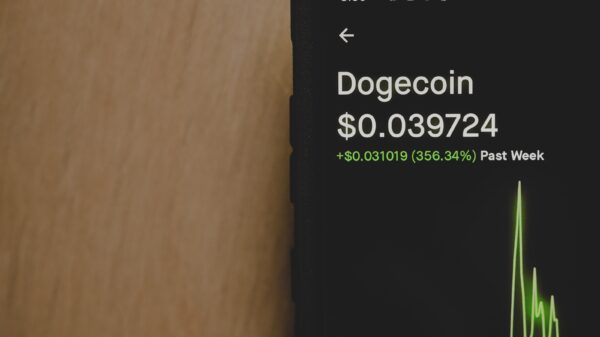
Are you tired of manually tracking your expenses and struggling to stick to a budget? With the rise in personal finance apps, there are now more options than ever before to help manage your finances. But with so many choices available, it can be overwhelming to decide which method is best for you. In this blog post, we’ll compare personal finance apps versus traditional budgeting methods and determine which option saves you both time and money. Get ready to revolutionize the way you handle your finances!
Introduction to Personal Finance Apps and Traditional Budgeting Methods
There are many personal finance apps available today that can help you save time and money. However, some people still prefer traditional budgeting methods. So, which is better?
Personal Finance Apps
Personal finance apps can be a great way to manage your finances and save time. There are many different apps available, so you can find one that suits your needs. Some of the most popular personal finance apps include Mint, YNAB, and Personal Capital.
Mint is a free app that allows you to track your spending, create a budget, and see where you can save money. It also provides insights into your financial habits so you can make changes to improve your financial health.
YNAB (You Need a Budget) is an app that helps you create a budget based on your income and expenses. It also gives you the ability to track your progress and see where you can cut back on spending. YNAB costs $11.99 per month or $84 per year.
Personal Capital is an app that allows you to track all of your financial accounts in one place. This includes investment accounts, bank accounts, credit cards, and more. Personal Capital also has tools to help you plan for retirement, including retirement calculators and asset allocation recommendations. Personal Capital is free to use, but there is also a premium version with additional features for $19.95 per month or $199 per year.
Comparison of Budgeting methods for Pros and Cons
One of the most common questions we receive at finance apps is whether they are better than traditional budgeting methods. The answer, unfortunately, is not a simple one. It depends on your individual circumstances and preferences.
That said, there are some key advantages and disadvantages to both approaches that you should consider before making a decision.
Advantages of personal finance apps:
1. They can be used anywhere, at any time. This means you can track your spending and income while you’re on the go, which can be helpful if you have a busy lifestyle.
2. They can provide real-time insights into your finances. This can help you make more informed decisions about where to spend your money and how to save more effectively.
3. They can help you track your progress towards financial goals. This allows you to see how well you’re doing in relation to your targets and makes it easy to adjust your budget accordingly.
Disadvantages of personal finance apps:
1. They require a degree of discipline to use effectively. If you’re not diligent about tracking your spending, it’s easy for things to get out of control quickly.
2. They can be expensive to use if you opt for premium features or subscription-based services. Make sure you compare the costs of different appsto find the most affordable option for you.

3 Advantages of traditional budgeting methods:
1) You don’t
How to Choose the Right Option for You
When it comes to budgeting, there is no one-size-fits-all solution. The best approach for you will depend on your individual financial situation and goals.
If you’re looking for a simple way to track your spending and stay within your budget, a personal finance app can be a great option. There are many different apps available, so be sure to do your research to find one that fits your needs.
If you want more control over your budget and are willing to put in the time to create a detailed plan, traditional budgeting methods may be the better choice for you. This approach takes more work upfront, but can give you greater peace of mind knowing that all of your expenses are accounted for.
No matter which method you choose, the most important thing is that you stick to your plan and make adjustments as needed. By doing so, you’ll be on your way to achieving financial success.
Benefits of Using Personal Finance Apps
There are many benefits to using personal finance apps rather than traditional budgeting methods. One of the main benefits is that you can track your spending more easily. With most traditional budgeting methods, you have to manually track your spending, which can be time-consuming and difficult to remember to do. With a personal finance app, all of your spending is automatically tracked so you can see exactly where your money is going.
Another benefit of using a personal finance app is that you can set up a budget and track your progress towards it. This can help you stay on track with your financial goals and make sure you are not overspending. With traditional budgeting methods, it can be easy to lose track of your progress or stray from your budget.
Personal finance apps typically offer features that traditional budgeting methods do not have. For example, some apps allow you to connect to your bank account so you can see all of your transactions in one place. Other apps offer tools to help you save money, such as the ability to set up a savings goal and track your progress towards it.
Benefits of Traditional Budgeting Methods
If you’re looking for a quick and easy way to budget, personal finance apps may be the way to go. But if you want more control over your finances and are willing to put in a little more effort, traditional budgeting methods may be better for you.
Here are some of the benefits of traditional budgeting methods:
1. You’re in control: With traditional budgeting methods, you’re in charge of your finances. You decide how much money you want to save each month and where you want to allocate your funds. This can help you stay motivated to stick to your budget and reach your financial goals.
2. You can tailor it to your needs: Traditional budgeting methods can be customized to fit your unique financial situation. If you have specific savings goals, such as buying a house or saving for retirement, you can create a budget that aligns with those goals.
3. You get a better understanding of your spending: When you track your spending using traditional budgeting methods, such as creating a spreadsheet or writing down every purchase in a journal, you gain valuable insights into your spending habits. This can help you make informed decisions about where to cut back so you can save more money each month.
Strategies for Successfully Managing a Budget with Either Method
There is no one-size-fits-all answer to the question of whether personal finance apps or traditional budgeting methods are better for saving time and money. It depends on your individual financial situation and goals. However, there are some general strategies that can help you successfully manage a budget with either method.
If you’re using a personal finance app, make sure to set up alerts or notifications so you can stay on top of your spending. You can also use the app to track your progress towards your financial goals, which can help keep you motivated.
If you’re using a traditional budgeting method, such as a spreadsheet or envelope system, make sure to update it regularly so that it reflects your current spending and income. It can also be helpful to set up a system of checks and balances, such as having someone else review your budget periodically, to help ensure that you’re sticking to your plan.
Whichever method you choose, the most important thing is to be diligent about tracking your finances and sticking to your budget. With a little effort and discipline, you can save time and money no matter which approach you use.
Conclusion
From this article, we can conclude that personal finance apps are a great way to save time and money when it comes to budgeting. They provide an easy-to-use interface to track your income and expenses, allowing you to make smarter decisions with your finances. However, traditional budgeting methods still have their place in the financial world as they offer more control over your finances and give you better insight into how much money you’re really making or losing each month. Ultimately, it all depends on what fits best for your individual needs – but either way, prudent budget planning is always key!







